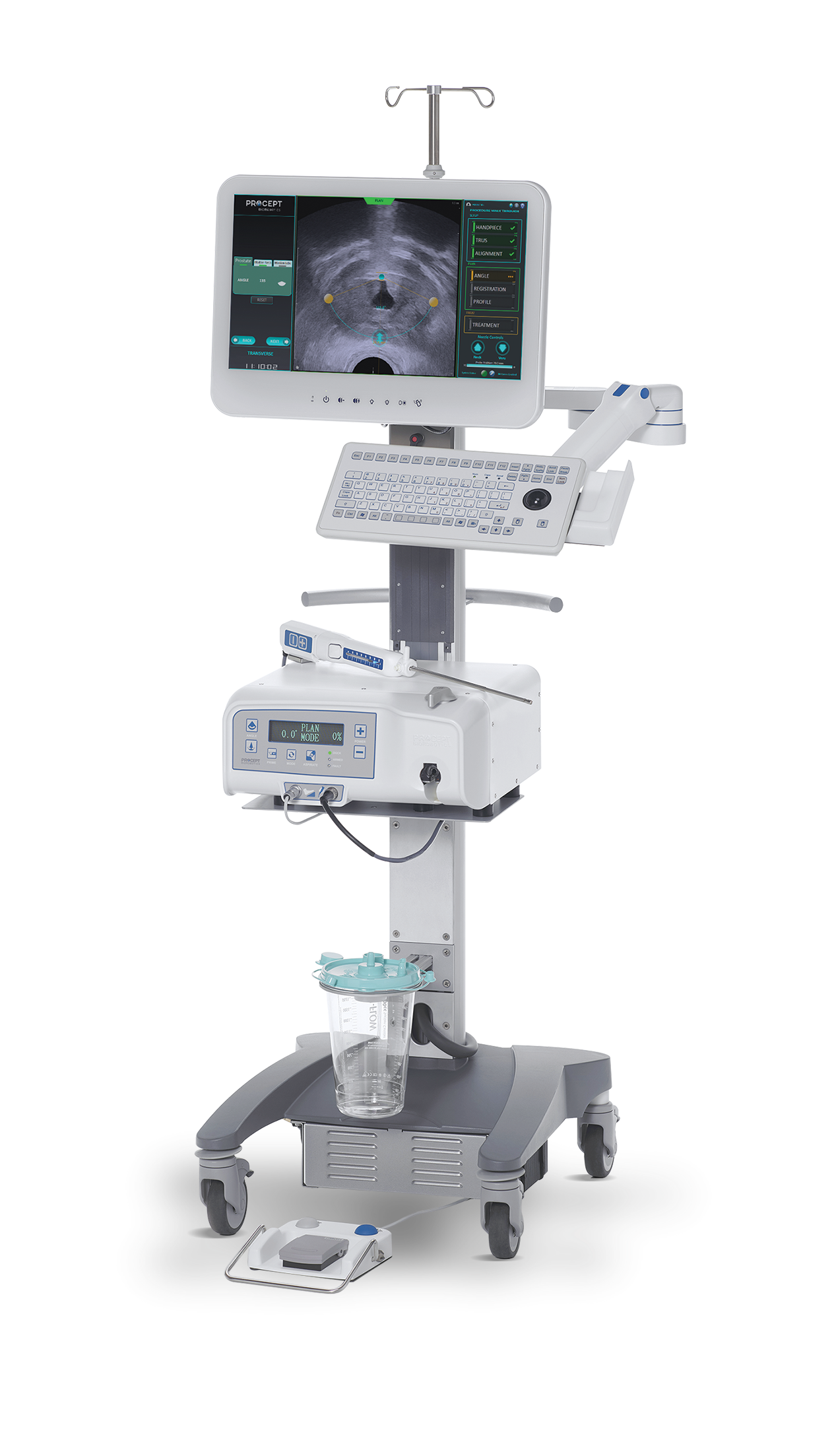Aquablation
Aquablation Therapy Surgical Treatment for BPH (enlarged prostate)
Aquablation therapy is a new type of surgical treatment for benign prostatic hyperplasia (BPH).
We know choosing a treatment option can be overwhelming, as it often forces men to compromise in some way. This could mean not responding well to medication, or choosing a treatment that only provides limited relief, that may have a long recovery time, or that may even cause issues with sexual function.
Aquablation therapy is a one-of-a-kind procedure that aims to minimize this compromise.
Aquablation therapy is a resective procedure, which means that the prostate tissue causing symptoms is surgically removed. No incision is made in the abdomen, as the prostate is reached through the urethra.
Aquablation therapy is performed in a hospital and is done under anesthesia. The procedure typically takes less than an hour and involves an overnight stay.
There are two key steps to the Aquablation procedure - outlined in the videos below.
Step 1. Creating a Surgical Map
Every prostate is unique in size and shape. Aquablation therapy enables surgeons to customize your procedure to your specific anatomy.
How? Aquablation therapy is the only BPH surgical procedure integrates ultrasound imaging with the standard camera (called a cystoscope). This gives surgeons the ability to see the entire prostate in real time, which allows them to map which parts of your prostate they want to remove and which parts they want to avoid.
Specifically, this mapping enables surgeons to avoid removing the parts of the prostate that cause irreversible complications like erectile dysfunction, ejaculatory dysfunction, and incontinence.
Step 2. Removing the Prostate Tissue
Once the surgeon has created a surgical map, a robotically-controlled, heat-free waterjet removes the prostate tissue that was outlined on the map. This robotic technology minimizes human error in removing prostate tissue, and ensures the prostate tissue is removed precisely, consistently, and predictably.
When required, the surgeon may choose to use a minimal amount of cautery following an Aquablation procedure to control bleeding.

